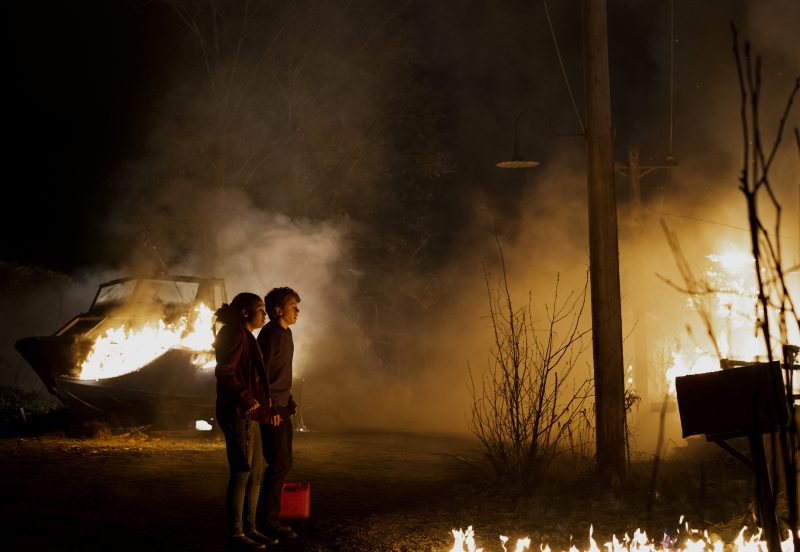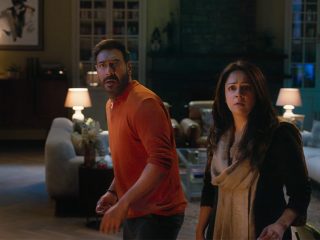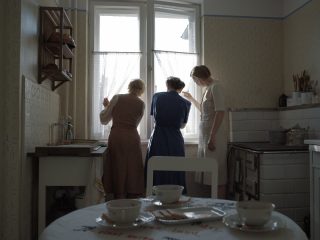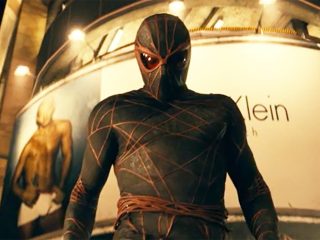Mike Flanagan is a creator whose love for seminal horror literature is always evoked and present in his adaptations. He is a fan who is dedicated enough that he reconciled the discrepancies between the film and book versions of “The Shining” and connected them in his adaptation of “Doctor Sleep”. The fact that it was remotely coherent showed a man who had a handle on making horror with a sense of classical bent, while creating characters who are compelling enough to follow and listen as they deliver Flanagan’s cleverly crafted monologues.
Watching “The Fall of the House of Usher” reminded me of Sam Shaw and Dustin Thomason’s two-season show Castle Rock, which held a similar premise of combining the mythology and the intimate history of the characters of the well-loved Stephen King novels in a single universe, showing an epic saga of good vs. evil. While Flanagan himself will tackle the ambitious “Dark Tower” series – which was Stephen King’s attempt to connect all his novels in a singular multiverse – “The Fall of the House of Usher” plays out more in the vein of “Castle Rock”, in that it takes the protagonists of all the popular Edgar Allan Poe short stories and interweaves them in the skeleton of a single story.
What makes this trope of Flanagan wildly ambitious is transposing all of these stories within the context of the current era in the 21st century—an era of debauchery, social media influence, the world being ruled by a conglomerate of one-percenters, and a world where Big Pharma has been slowly poisoning the US population by making them addicted to prescription pills—all under the name of “making the world a better place” by taking away the pain. Roderick Usher (Bruce Greenwood) and his sister Madeline (Mary McDowell), supported by their trustworthy fixer (Arthur Pym), are the leading giants of the pharmaceutical industry—the Fortunato Corporation. Their children, all six of them through four women, reap the benefits of the Usher family but are all defiantly fighting their way to the top to win Daddy Usher’s approval. It is not surprising to see the “Succession” influence in “The Fall of the House of Usher”, especially concerning how much these siblings hate each other or how much their father gives them all access to his wealth and privilege but is devoid of the love that a parent should theoretically be inclined to give in the first place.
The one difference is the presence of Verna (Carla Gugino), a mysterious, seemingly immortal woman who is connected indirectly to the deaths of all the Usher children. By naming all of the children corresponding to the protagonists of the different Poe stories, Flanagan references those stories in the correspondingly named episodes. The framing device—Auguste C. Dupin (Carl Lumbly) meeting with Roderick Usher at their old, broken-down house and Roderick not only giving his confession to the numerous crimes he had committed but also how his children were killed—gives it an interesting episodic structure. At every moment in an episode, Roderick explains that he learned how they died because they informed him after their deaths, a telltale form of confusion where the supernatural interweaves well with a medical infirmity. Each episode thus begins with an introduction of an Usher kid and the plan for the day that would lead to their deaths. The episode then stops in the middle, during which Roderick flashes back to the past, where he and his sister were trying hard to navigate the internal politics of Fortunato, even making friends with a young Dupin (Malcolm Goodwin) and retelling how they rose the ranks of the company, before the episode finally ends in the third act, with the kid dying a gruesome and horrible death.
“The Fall of the House of Usher” would be remembered and should be studied as a textbook on how to make clever adaptations. Prospero, the worshipper of Satan in “The Masque of Red Death,” is reimagined as the youngest Usher heir with an arrogant yet naive streak resembling that of the influencer generation. His death is one of the numerous gruesome deaths in the show, both homaging the source material and the Roger Corman adaptation but still tweaked in a modern aspect such that the impact is even more terrifying. A similar instance is shown in Murder in the Rue Morgue, where Flanagan cleverly interweaves pharmaceutical testing on animals as a methodology to lead to the visceral denouement of the original book. The show as a result is extremely meta and referentially heavy, but there is also a visual palette incorporated—a mix of steel blue and bright primary colours in some instances—that produces a gothic sheen even within the modernity of a world filled with mobile phones and tablets. Part of the reason is also how the architecture is depicted, as stark monuments with huge windows showing the kingdom of the House of Usher also show how dissociated these characters are from the world at large.
But this dissociation also becomes a problem. Because this is also a show cleverly becoming part of the “Eat the Rich” narrative, the show depicts these Usher kids as veritable bottom-feeders of humanity, selfish man-children whose rare showcase of humanity is only at the service of the progression of their ends. But because of that, there is no reason for any of the viewers to remain invested in these characters, especially the ones whose deaths occur during the latter half of the show. Flannagan’s construction of these characters is imbalanced by his love for the source material. As a result, “The Fall of the House of Usher” is both narratively dense and simultaneously thin. You are in awe at the process of making the storytelling twirls, but there is nothing in any of the characters that could be compelling or remotely interesting to latch on to.
The characters whom Flanagan wants the viewers to latch on to are the two heads of the Usher family, Roderick and Madeline. For that, they introduce the backstory of how the Ushers took over, essentially, their birthright. The problem is that the younger depiction of these characters is almost completely dissociated from their older counterparts, especially in the case of Roderick Usher. It is very hard to extrapolate the younger version of that character to the current, vindictive, manipulative one we are witnessing spiralling towards his death, and none of the writers suitably connect those two strands. The positive decision taken is not to explain the origins or methodology of Verna. Even within the context of the modern world, how Flanagan and co-director Michael Fimognari visually depict the world has that sense of gothic eeriness, and thus the magic realism of Verna feels very much part of this world, even though it starts anachronistically to the rational society the show theoretically resides itself in.
If nothing else, “The Fall of the House of Usher” will entice audiences to check out the classics and revel in the idiosyncrasy and verve of Edgar Allan Poe, along with his penchant for gruesome horror underlying violence. Even though the show towards the end falls back on the crutch of Flanagan delivering long monologues, when the monologues are delivered by Carla Gugino or Bruce Greenwood and they are reciting the actual poems, one can’t help but be swept away by the rhythm of the play of words, as they are swept away by the grandeur and ambition of the show, however thematically thin it might have been.











